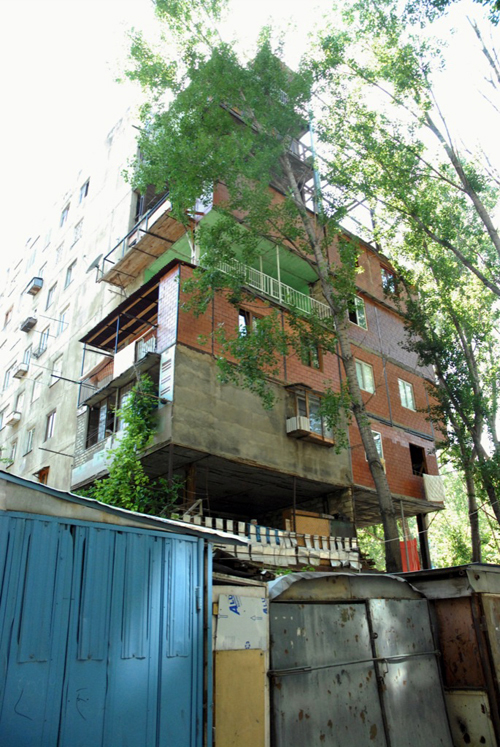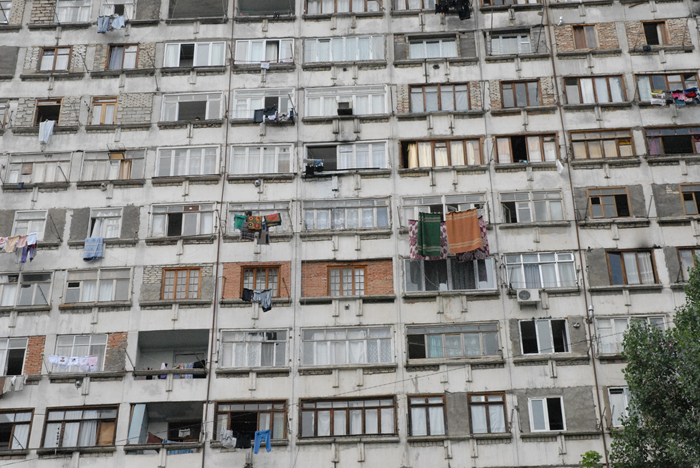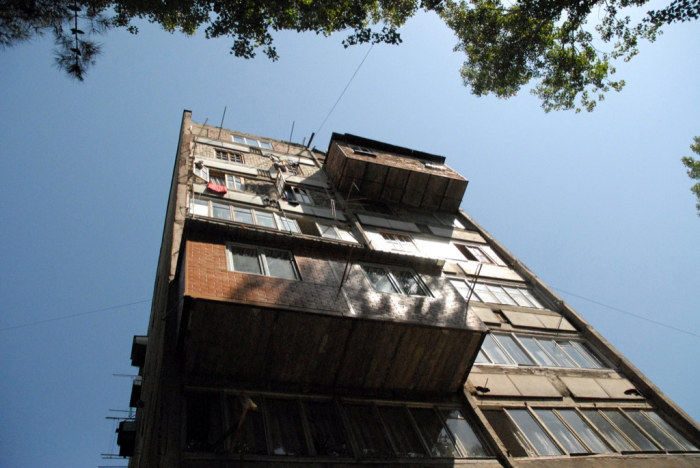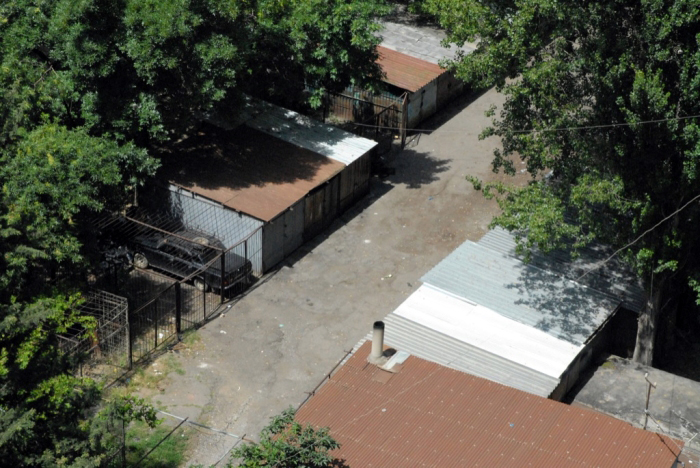
Came across these pictures of the Gldani housing in Tbilisi on the Social Housing after the Soviets blog. It documented the old Soviet social housing estate 20 years on after the fall of the Soviet Bloc. In some pictures, room extensions constructed in a variety of contrasting materials can be seen protruding from the utilitarian style slab blocks, some having balconies, some having bay windows and one with an overgrown plant spilling out of what might be a lush indoor garden. In another picture, the flat facade of the block is composed of a patchwork of different materials, with much of the original fenestration modified, some partially bricked to reduce the window opening (and probably creating a warmer room). Despite the variety of the modifications, the unspoken horizontal and vertical bounds of each individual unit is strictly adhered to and the structural integrity of the existing building is never compromised. There is a fine balance between private benefits and the public good. The ground floor too is being territorialized, with parts of it being partitioned and closed up into pockets of storage and garage spaces.
This post-occupancy modification of architecture expresses ideas of free will and individual choice, and also represents the shifting power relations between architects, end users and the authorities. Architects often,whether consciously or not, imagine new buildings as a finished products, with all needs and requirements fulfilled and future growth projected and accounted for. But very much like Barthes' dead authors, architects rarely have control during the post occupancy phase. Reality is complex and future outcomes are more often than not quite different from what we imagine. As much as the personal and irregular customization of the building is an affront to the ideology that the brutal Soviet style architecture represented, it is also a big Nelson Muntz "ha-ha" to the totality of the architect's grand and slightly delusional vision.
As much as I am excited by the vitality and ideas suggested by post-occupancy modification, I also relish the grotesque (in a good way) patchwork aesthetics of the trophic growth of the new volumes and textures, borne not of vanity but out of efficiency, economy and need; like an expanding colony of algae spreading out along the path of water dripping off the eave of a roof, or a creeper piercing through layers of old paint on a wall firmly grasping to the masonry underneath.
On the topic of organic growth, Kisho Kurokawa's Metabolist icon, the 1972 Nakagin Capsule Tower is falling into disrepair and faces demolition, its designed potential for organic expansion never utilized.





No comments:
Post a Comment